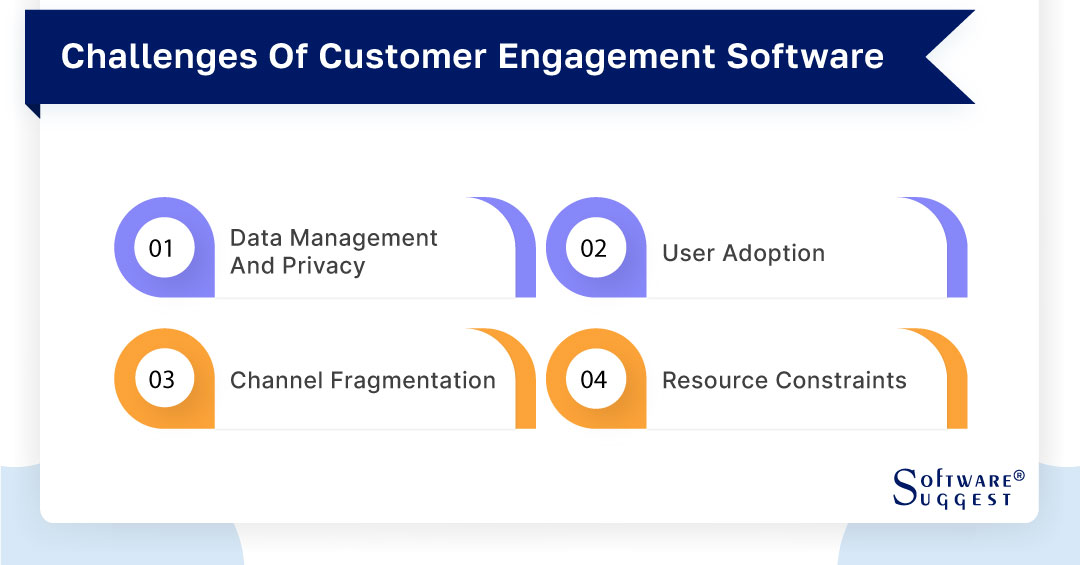The Ultimate Hookup Guide
Explore expert tips and advice on navigating the world of modern dating and hookups.
User Engagement Challenges That Could Use a Fresh Perspective
Discover innovative strategies to tackle user engagement challenges and transform your approach for lasting impact!
Rethinking User Engagement: Innovative Strategies for Today’s Digital Landscape
In today’s fast-paced digital landscape, user engagement has become more critical than ever. Traditional strategies, such as merely posting content on social media or sending newsletters, are becoming less effective. Instead, businesses must adopt innovative strategies that focus on creating interactive and personalized experiences. Techniques such as incorporating gamification, utilizing augmented reality, and leveraging real-time feedback tools can significantly enhance the engagement levels of users. These strategies not only capture attention but also foster a sense of community and loyalty among your audience.
Another powerful approach to rethinking user engagement is through the use of data analytics and AI-driven insights. By understanding user behaviors and preferences, companies can tailor their approaches to meet specific needs effectively. For instance, employing personalized content recommendations and dynamic web experiences can transform how users interact with a brand’s digital presence. Furthermore, engaging users through interactive content such as polls, quizzes, and live webinars can create memorable experiences that drive deeper connections and sustained engagement over time.

Counter-Strike is a highly popular tactical first-person shooter game that emphasizes teamwork and strategy. Players choose to be either terrorists or counter-terrorists, competing in various game modes. To enhance your gaming experience, you can check out the clash promo code which can provide you with great rewards. With its competitive scene and constant updates, Counter-Strike remains a favorite among gamers worldwide.
Unlocking User Engagement: What Are the Unseen Barriers?
User engagement is crucial for the success of any online platform, yet many content creators struggle with unseen barriers that hinder their ability to connect with their audience. These barriers can range from poor site navigation to a lack of personalized content. For instance, if the layout of a website is confusing, users may quickly lose interest and leave before engaging with the content. Additionally, failing to understand the specific needs and preferences of your target audience can result in content that feels generic and uninviting. To overcome these challenges, it's essential to conduct thorough user research and regularly analyze user behavior to identify areas for improvement.
Another significant yet often overlooked barrier to user engagement is the impact of loading times and mobile optimization. Studies show that users are more likely to abandon a site that takes longer than three seconds to load. Moreover, with the increasing prevalence of mobile browsing, it's crucial to ensure that your website is fully optimized for mobile devices. A responsive design can significantly enhance user experience, making it easier for visitors to access content and interact with your site. By addressing these unseen barriers and prioritizing user experience, content creators can foster deeper connections and drive higher levels of engagement.
Are We Overlooking Key Factors in User Engagement? A Deep Dive into Fresh Perspectives
In today's digital landscape, user engagement is often touted as a crucial metric for measuring the success of online content. However, are we overlooking key factors that truly drive this engagement? One perspective worth exploring is the role of emotional connection. Research indicates that users are more likely to engage with content that resonates on an emotional level. By incorporating storytelling techniques and relatable themes, content creators can foster deeper connections with their audience. Additionally, the importance of personalization cannot be overstated; tailored experiences keep users invested and encourage them to return repeatedly.
Furthermore, we must consider the impact of accessibility and user experience in driving engagement. If a website is difficult to navigate or content is not easily searchable, even the best material risks being overlooked. According to recent studies, up to 70% of users abandon sites that provide a poor experience. Hence, investing in a seamless design and intuitive layout is key. Implementing feedback mechanisms, such as surveys or comments, can also unveil valuable insights into user preferences, shedding light on aspects we may be neglecting in our quest to boost engagement. As we analyze engagement metrics, it's imperative to adopt a holistic view that incorporates these often-overlooked elements.